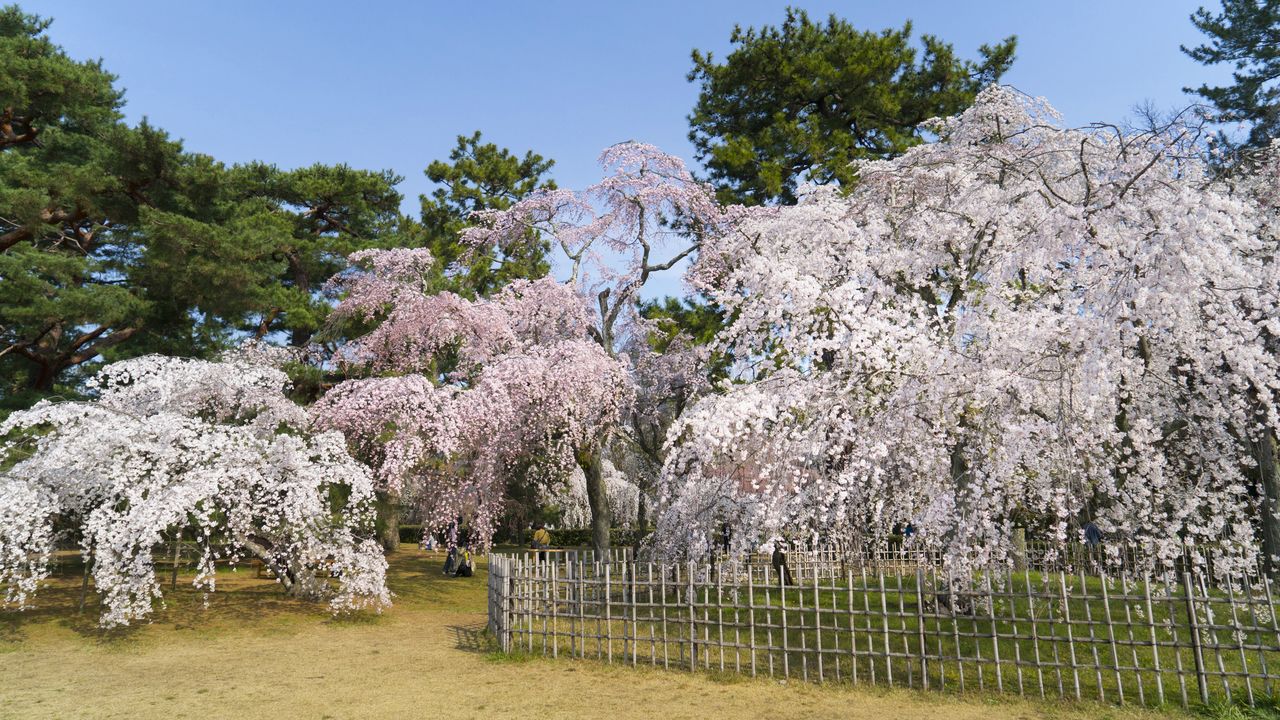
Kyoto Gyoen National Garden: A Stroll Among the Cherry Trees
Guideto Japan
Travel- English
- 日本語
- 简体字
- 繁體字
- Français
- Español
- العربية
- Русский
Itozakura: Harbinger of Blossom Time
Kyoto Gyoen National Garden is located in Kamigyō-ku, in the heart of Kyoto. Spanning an area 700 meters east to west and 1.3 kilometers north to south, this land had been the site of many estates of imperial court nobles through the Edo period (1603–1868). In the Meiji (1868–1912) and Taishō (1912–26) eras, a tract of this land was set aside with the primary objective of preserving the Kyoto Imperial Palace. In 1949, this tract was designated a National Garden, which to this day is beloved by locals and tourists alike as a place for rest and relaxation. Come the springtime, the area takes on an added attraction, as visitors clamor to see over 1,100 cherry trees in bloom there, including weeping cherry trees and Japanese garden cherries.
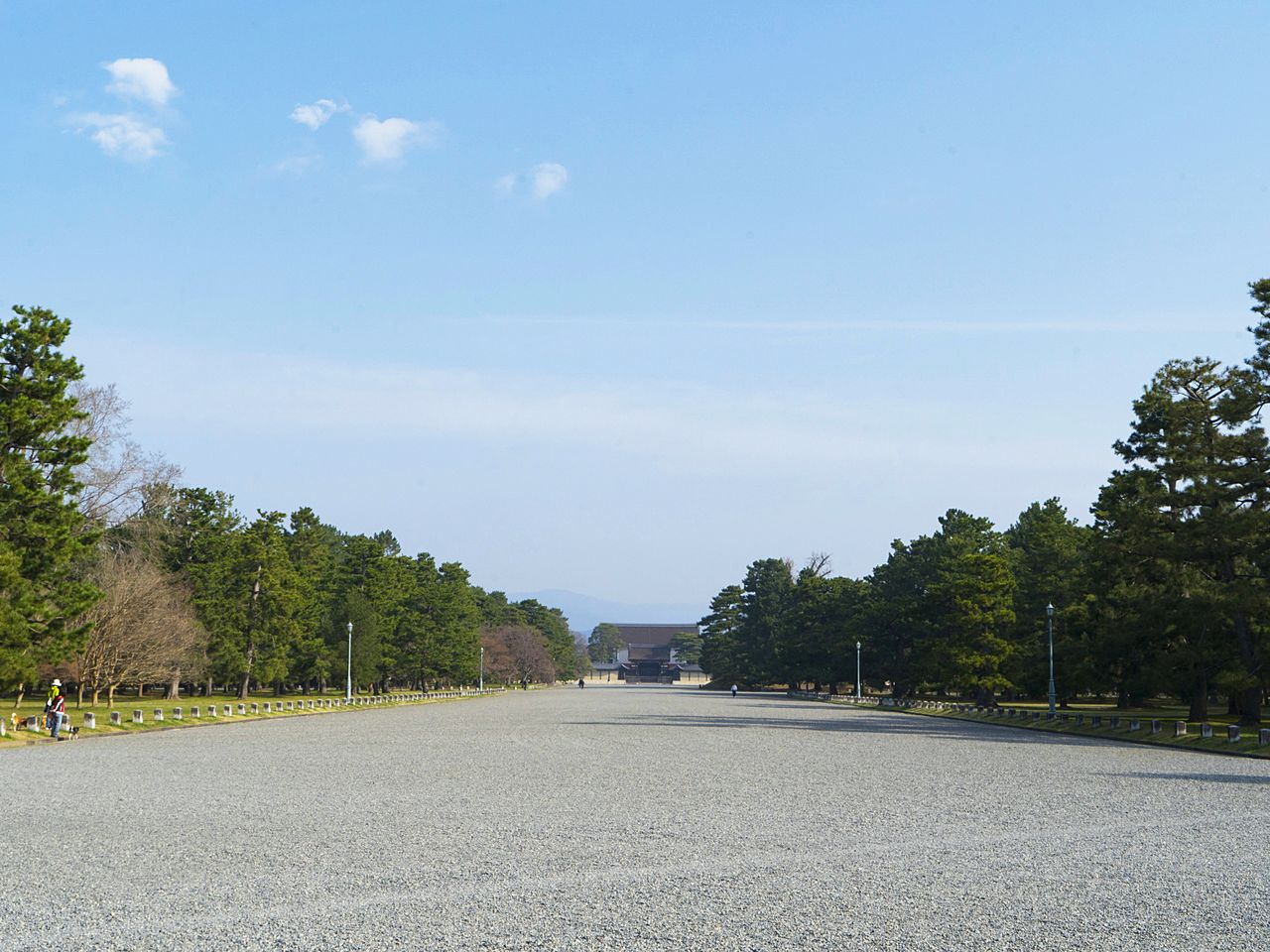
Dotted with historical buildings and other sites of interest, the garden grounds are an ideal place for a stroll.
A particularly popular sight at this time is that of the weeping cherry trees, also known as itozakura, which stand on the grounds of the former Konoe estate. This land was once home to the Konoe clan, one of the gosekke—five families whose members were eligible for the positions of sesshō (regent) and kampaku (chancellor) in the heyday of the court. These are some of the first cherry trees to bloom, beginning in mid-March. The site where the estate once stood is in the northwest part of the gardens, and many cherry trees are planted there, especially itozakura weeping cherry trees and yaebeni-shidare (Plena Rosea).
Itozakura weeping cherry trees are distinguished by slender branches decorated with rose pink flowers; their elegant beauty is at its finest when the blossoms are buffeted by a passing breeze. These branches spread widely, as if trying to blanket the skies. Seen from below, they create a broad canopy of cherry blossoms above the viewer. These branches extend over the Konoe pond as well, creating the fleeting spectacle of the blossoms reflected in its waters.

The blooming of the itozakura is a harbinger of the coming of spring in Kyoto Gyoen National Garden.

Take an elegant stroll under the overhanging itozakura branches.
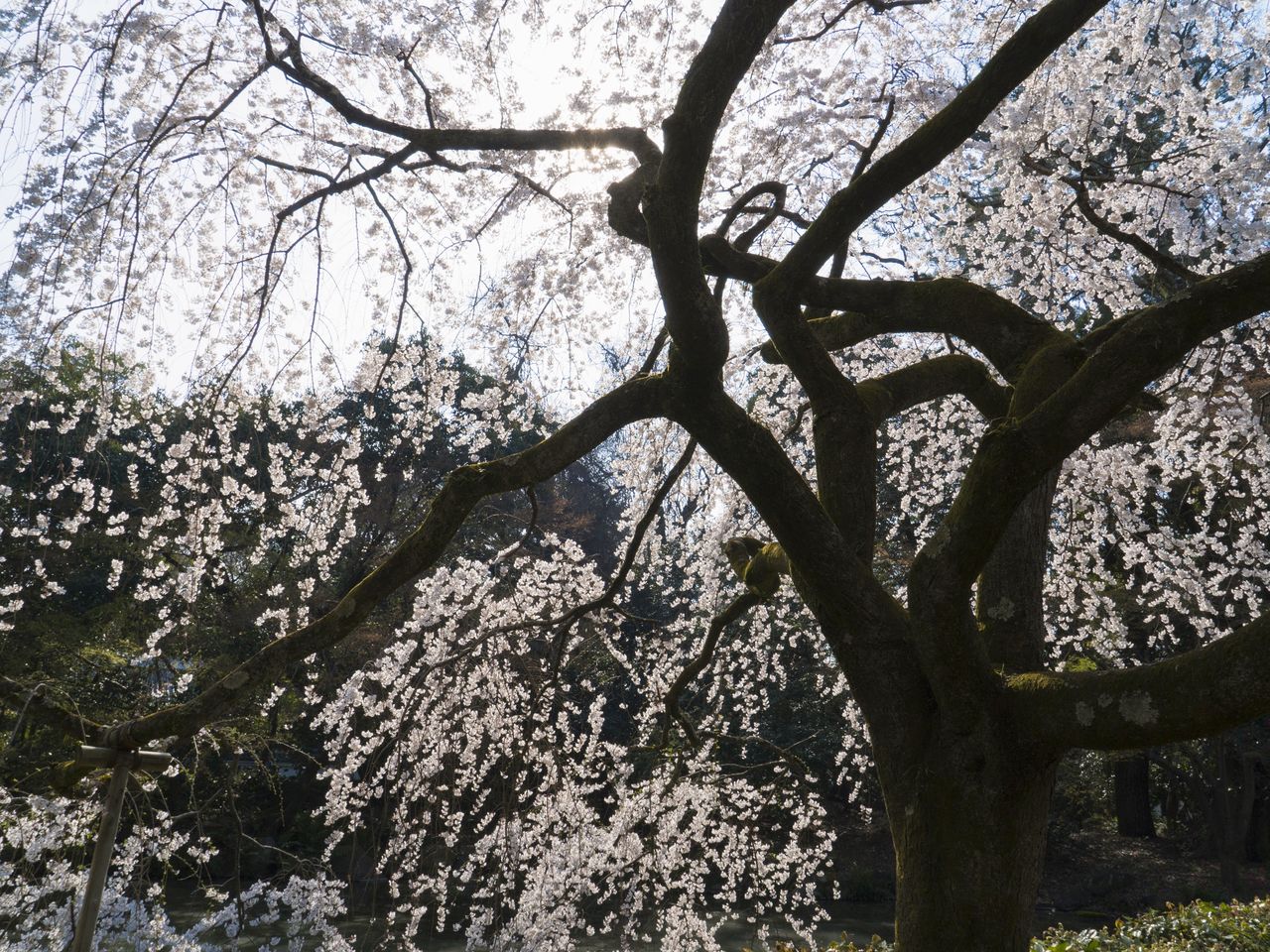
Seen from below, the lovely blossoms and delicate branches of the itozakura trees are enchanting.
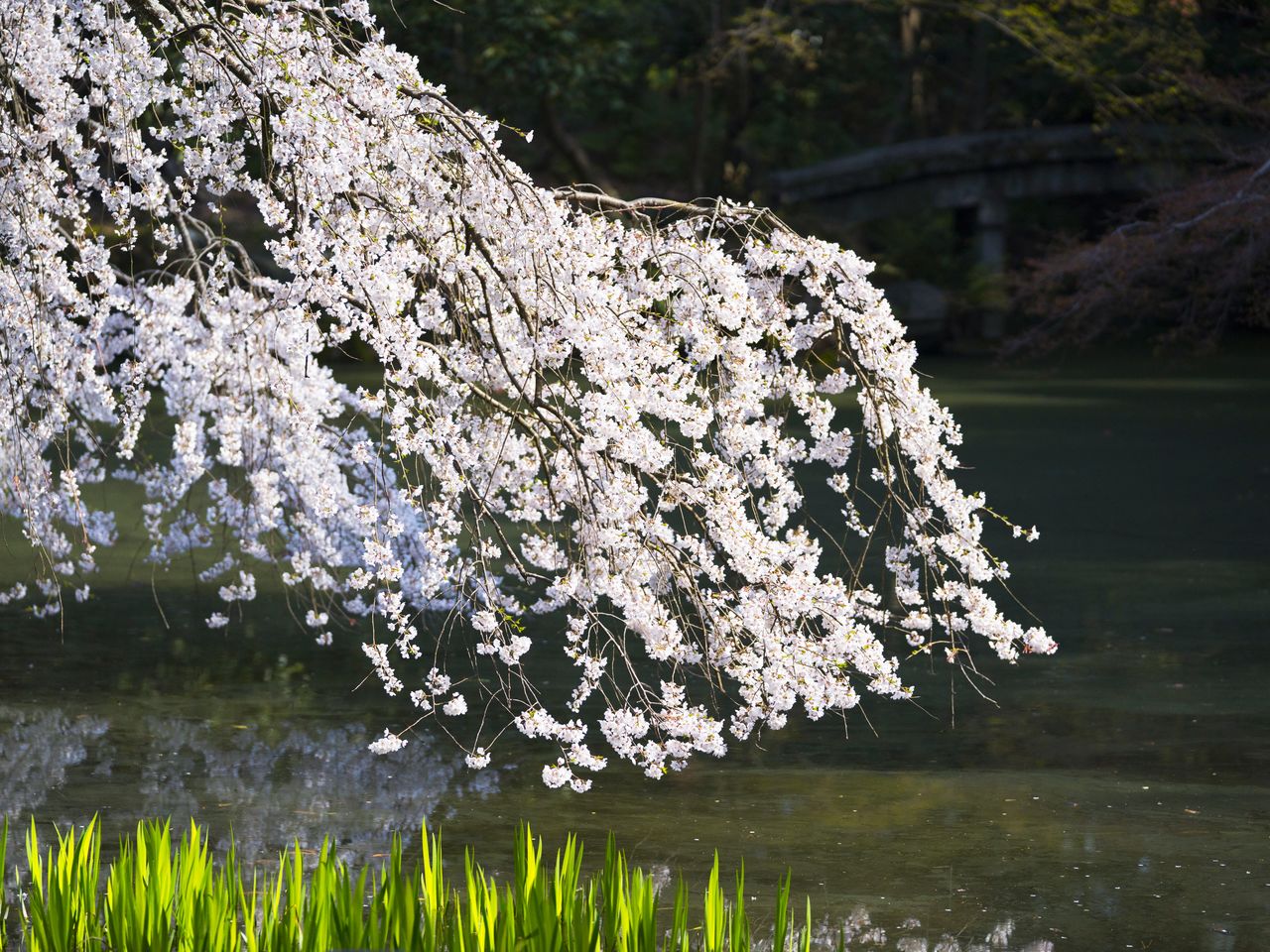
The blossoms above the Konoe pond are another lovely sight.
Other Trees to See
There are other noteworthy cherry trees in Kyoto Gyoen National Garden. One such tree is the Demizu shidarezakura, a magnificent specimen near the Demizu Stream walking area on the west side of the park. And near the Nakadachiuri-gomon Gate, north of the Demizu area, is another such tree, the Kuruma-gaeshi-zakura—whose name derives from a legend in which the tree was said to be so beautiful that Emperor Go-Mizunoo (1596–1680; r. 1611–29) had his “conveyance back away” from it.
Many other varieties have been planted in these spacious grounds, including wild cherry trees and kasumi-zakura (Prunus verecunda). The cherry blossom interval is thus particularly long in these gardens, running annually from mid-March to mid-May, giving large numbers of viewers the opportunity to savor the sights of the flowering trees. Optimum viewing times are between late March and mid-April.

The Demizu shidarezakura blooms early in the season, at nearly the same time as the weeping cherry trees.
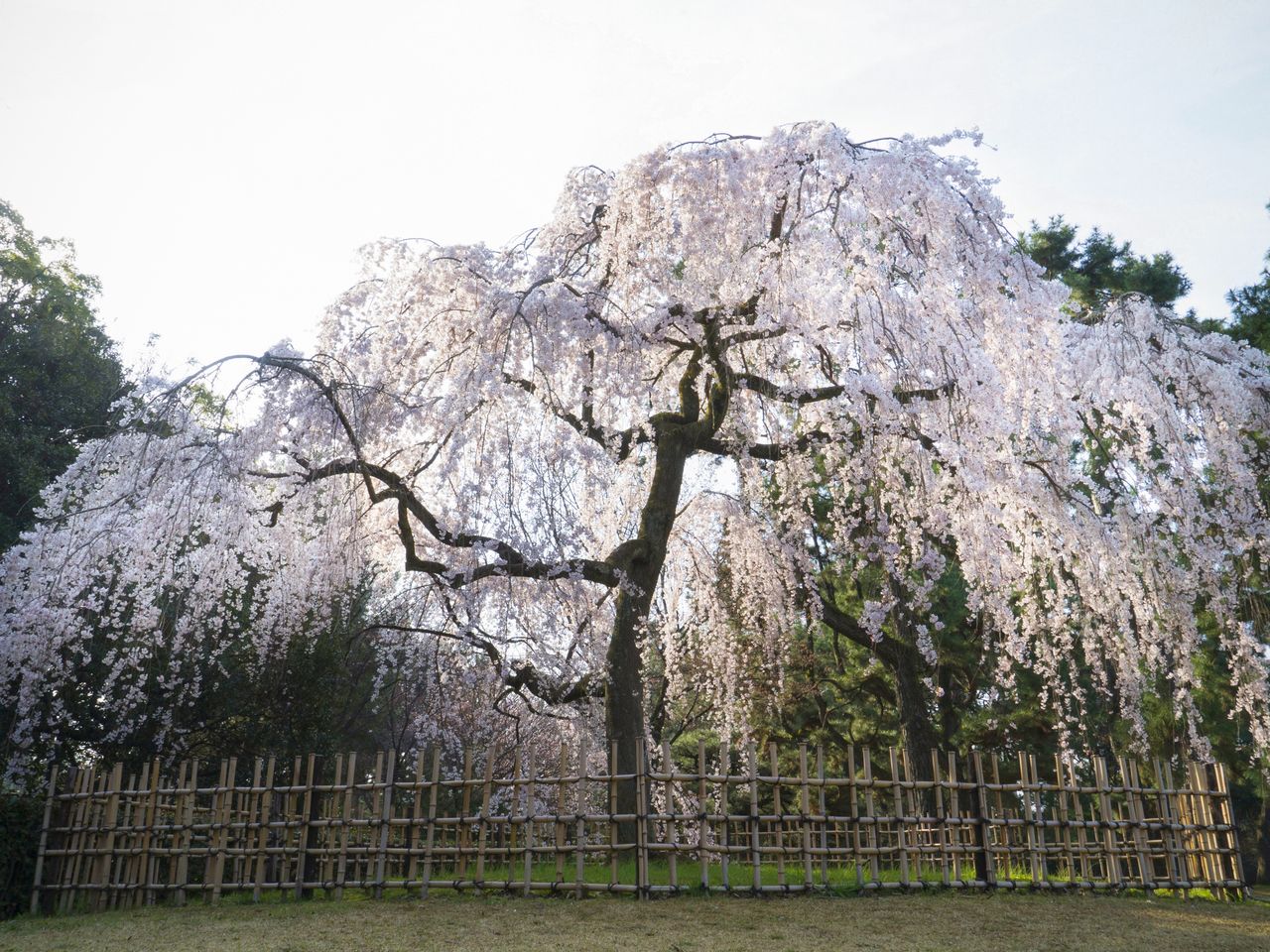
The tree combines an imposing array of branches with delicate, beautiful blossoms.
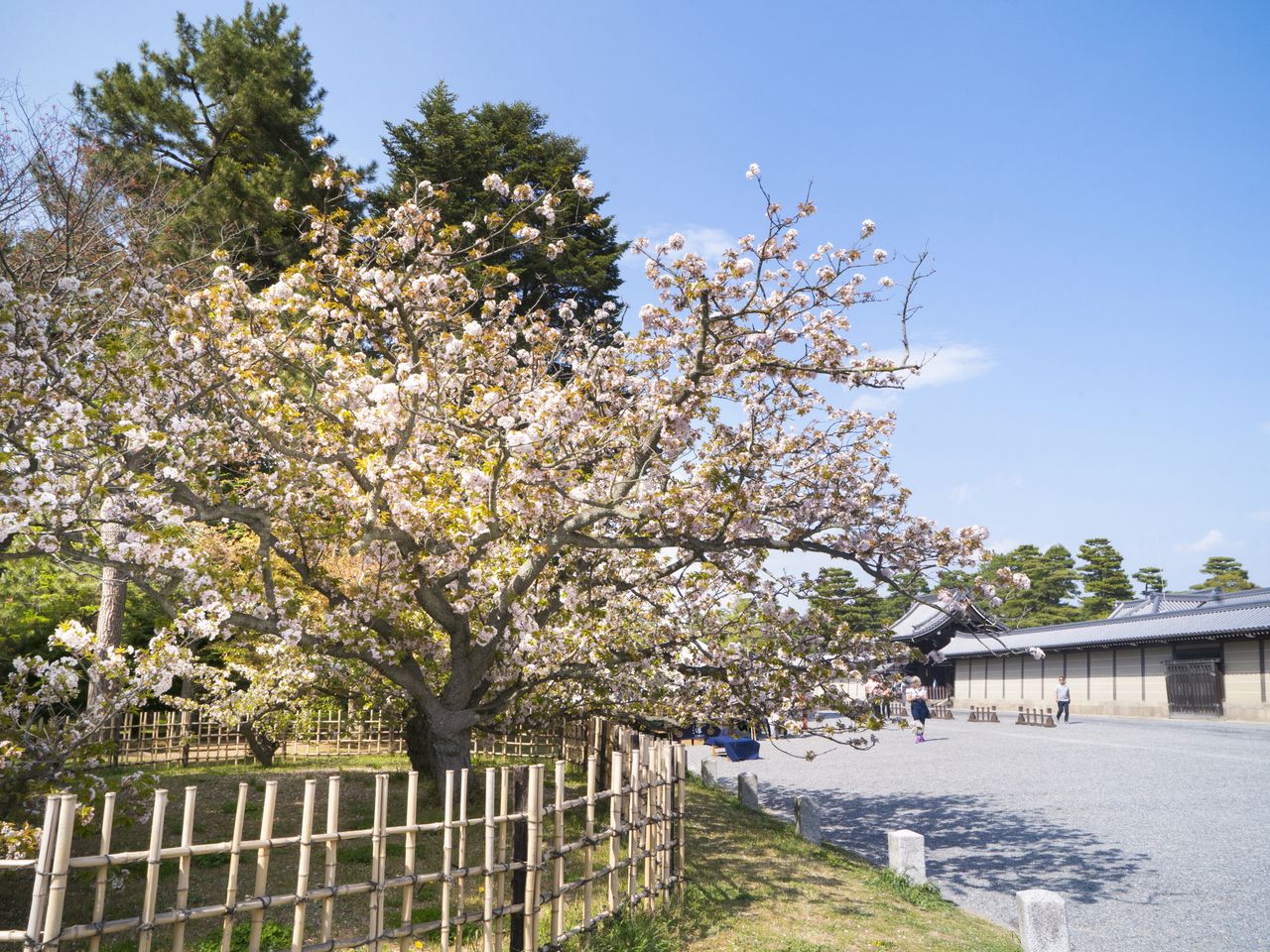
The Kuruma-gaeshi-zakura presents an elegant figure even when its blossoms have fallen. Optimum viewing times are early to mid-April.
Access: a short walk from Marutamachi and Imadegawa subway stations.
Related article › Japan’s Kyoto’s Cherry Blossoms: Spring 2018
(Originally published in Japanese. Reporting and text by Fujii Kazuyuki, 96Box. Photographs by Kuroiwa Masakazu and Fujii Kazuyuki, 96Box. Banner photo: Weeping cherry trees bloom on the grounds of the former Konoe estate.)
Kyoto tourism sakura Kansai park cherry blossoms cherry trees